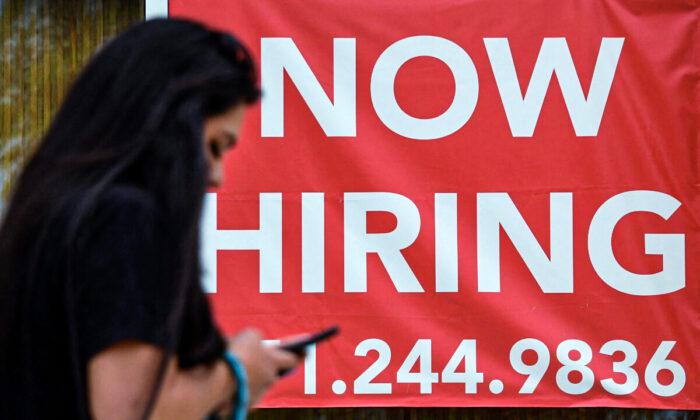New weekly filings for unemployment insurance—a proxy for layoffs—have reversed three consecutive weeks of declines and notched higher than analysts predicted, although jobless claims are still generally running at near pre-pandemic levels, suggesting that the labor market recovery remains intact.
“The higher-than-expected number defied expectations for improvement,” Bankrate senior economic analyst Mark Hamrick told The Epoch Times in an emailed statement. “Even so, one would not construct a new trend out of one week’s movement, particularly given the generally low level of new claims overall and with unemployment at 4 percent.”
Continuing unemployment claims, which run a week behind the initial filings figure and reflect the total number of people receiving benefits through traditional state programs, fell by 26,000 to 1.59 million.
“Inflation, the pandemic, and geopolitical concerns still have some plot twists yet to be resolved, underscoring the high level of economic uncertainty currently prevailing,” Hamrick said.
Consumer price inflation notched its highest annual pace in 40 years in January, with the 7.5 percent pace outstripping wage gains within the same period to deliver an effective pay cut for many Americans.
The elevated wholesale inflation readings, in particular, suggest that consumers are likely to see higher prices down the road as rises in production costs tend to get passed along to end consumers.
Improvement in COVID-19 dynamics has prompted a rollback of pandemic restrictions across the United States and in other parts of the world.
Along with falling infection numbers, CCP virus-related deaths and hospitalizations have also been declining, feeding into the growing hope that the end of the pandemic is in sight.
Economists are generally predicting that the U.S. economy will slow in the first quarter of 2022, although expectations are for relatively robust growth to take place for the year overall.
The Conference Board recently predicted a 2.2 percent annualized pace of growth in the first quarter of 2022 and 3.5 percent for the entire year, with uncertainty to the forecast coming from COVID-19 dynamics, the labor crunch, inflationary pressures, and the pace of central bank policy tightening.





